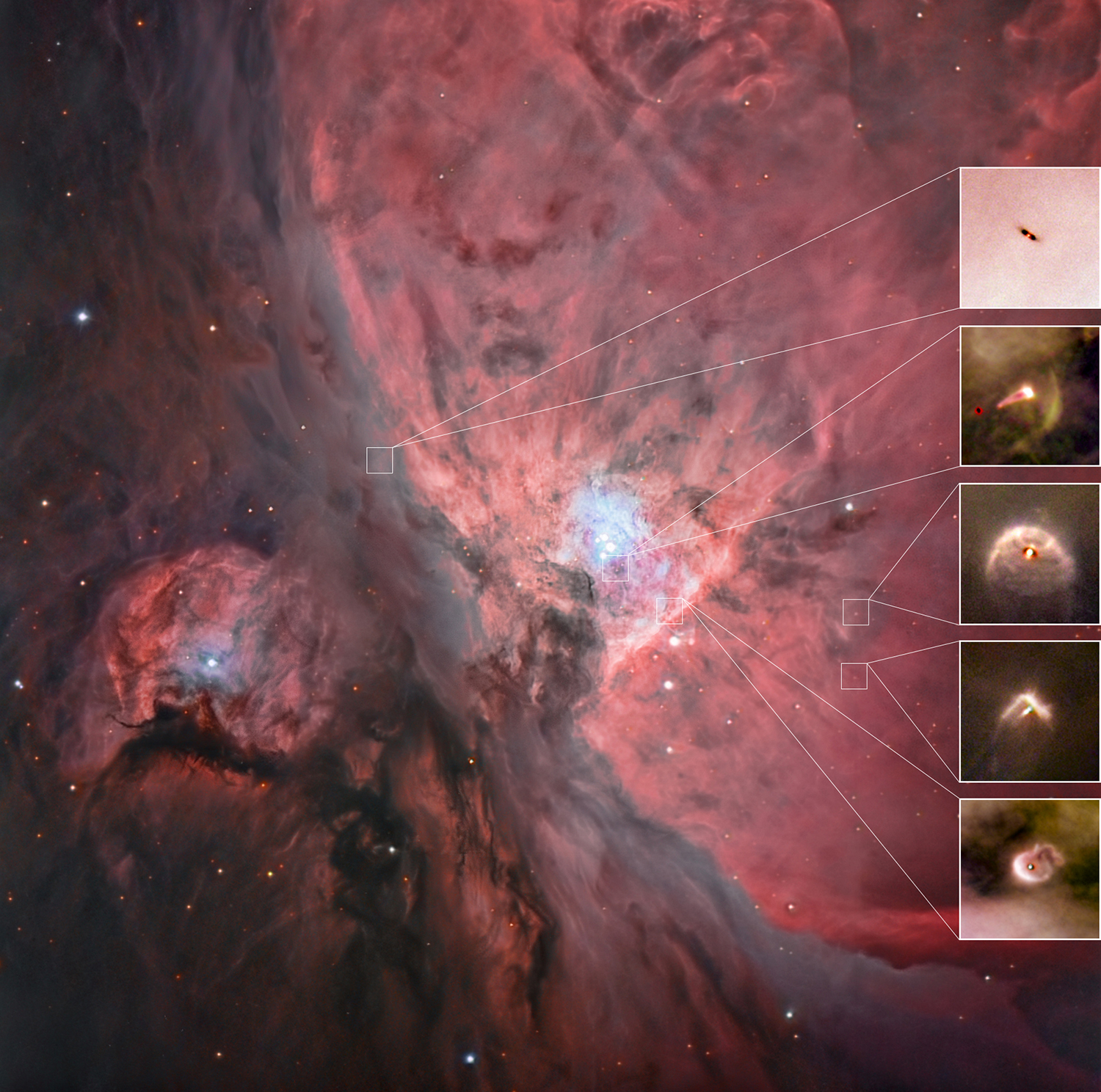
Orion Nebula - M42
When we look in the direction of the constellation Orion in the winter months, we look at one of the outer spiral arms of our Milky Way. This arm of gas and dust is the breeding ground of new stars. The Orion Nebula, also simply called M42 after the catalog of nebulous objects by Charles Messier (1730-1817), is a particularly photogenic part of this region of the sky. In this nebula about 1,300 light-years away young stars excite hydrogen to glow. The red light emitted by this gas is partially blocked by dark dust, creating fantastic structures.
In the area where the nebula glows in a strong blue, we see the main causes of the spectacle. Four stars form a trapezium here. The blue glow shows the actual color of these stars. Their light is scattered by the surrounding dust. The four bright stars share a star name: Theta Orionis. The stars, which are still very young with an age of 10,000 to 100,000 years, are however only the brightest specimens of a whole cluster of stars. This so-called trapezoidal star cluster is very rich with a density of 6,000 stars per cubic light year! The concentrated radiation of this star cluster not only excites the hydrogen to glow but also erodes the surrounding nebula. This creates the cave-like appearance of the Orion Nebula.
The Orion Nebula itself is part of a much larger complex, called OMC-1. It covers an area of the sky with an angular extension of 10°, which corresponds to twenty full moon diameters! We can only see the part that is excited by the trapezoid to glow. Where stars are formed, planets are not far away. Already in 1997, the Hubble Space Telescope with its infrared camera was able to detect warm dust disks in the Orion Nebula in which planets are forming. These disks are called proplyds, a word formed from the term protoplanetary disk. We took the trouble to identify the proplyds in this M42 image and inserted the matching images of the Hubble Space Telescope. If there were no galaxies like our Milky Way and the stars were evenly distributed in the universe instead, at the end of a star's life all chemical elements formed by the star would be lost, infinitely diluted in the great nothing. Galaxies, however, have the peculiarity of repeatedly collecting stardust with their gravitational force and forming new stars and planets from it. These planets consist of larger atoms than simple hydrogen and thus enable the complex chemistry of life. We are stardust.
-
Category
Reflection/Emission Nebula
-
Coordinates
RA 05h 35m 17.3s
DEC -05° 23' 28" -
Distance
~ 1344 ly
-
Apparent Mag
4 mag
-
Equipment
28“ f/8 RC
Custom Mount
SBIG STX-16803
Canon 600d -
Exposure
Hα: 12 x 300 s
Hα: 60 x 10 s
RGB: 20 x 180 s
RGB: 45 x 60 s
RGB: 26 x 10 s
Total Integration: 2.5 h -
Publication Date
15.01.2020


